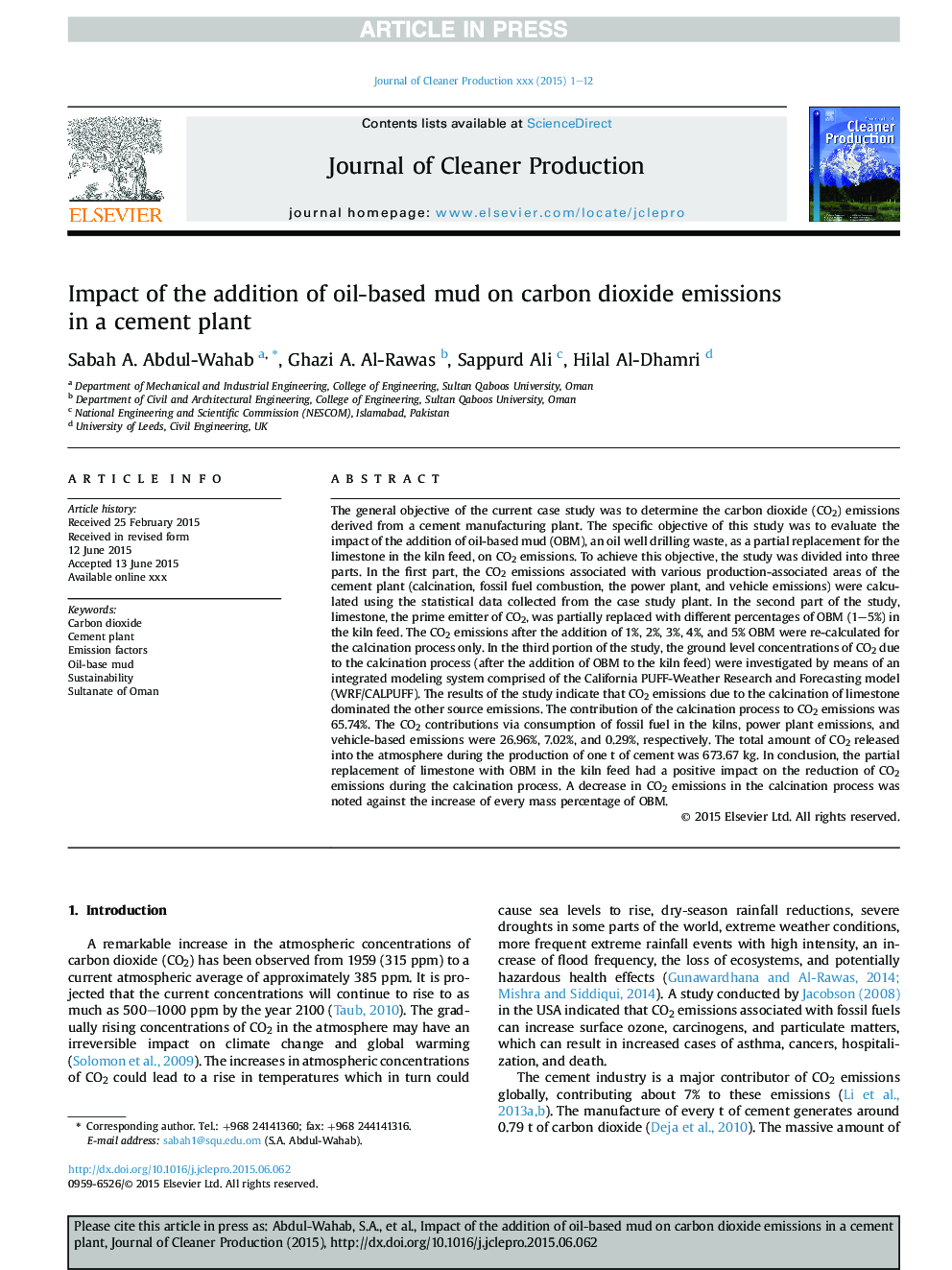| کد مقاله | کد نشریه | سال انتشار | مقاله انگلیسی | نسخه تمام متن |
|---|---|---|---|---|
| 10687963 | 1017969 | 2016 | 12 صفحه PDF | دانلود رایگان |
عنوان انگلیسی مقاله ISI
Impact of the addition of oil-based mud on carbon dioxide emissions in a cement plant
ترجمه فارسی عنوان
تاثیر افزودن گلدان های نفتی بر انتشار دی اکسید کربن در یک کارخانه سیمان
دانلود مقاله + سفارش ترجمه
دانلود مقاله ISI انگلیسی
رایگان برای ایرانیان
کلمات کلیدی
دی اکسید کربن، کارخانه سیمان، فاکتورهای انتشار، گل گندم، پایداری، سلطان عمان،
موضوعات مرتبط
مهندسی و علوم پایه
مهندسی انرژی
انرژی های تجدید پذیر، توسعه پایدار و محیط زیست
چکیده انگلیسی
The general objective of the current case study was to determine the carbon dioxide (CO2) emissions derived from a cement manufacturing plant. The specific objective of this study was to evaluate the impact of the addition of oil-based mud (OBM), an oil well drilling waste, as a partial replacement for the limestone in the kiln feed, on CO2 emissions. To achieve this objective, the study was divided into three parts. In the first part, the CO2 emissions associated with various production-associated areas of the cement plant (calcination, fossil fuel combustion, the power plant, and vehicle emissions) were calculated using the statistical data collected from the case study plant. In the second part of the study, limestone, the prime emitter of CO2, was partially replaced with different percentages of OBM (1-5%) in the kiln feed. The CO2 emissions after the addition of 1%, 2%, 3%, 4%, and 5% OBM were re-calculated for the calcination process only. In the third portion of the study, the ground level concentrations of CO2 due to the calcination process (after the addition of OBM to the kiln feed) were investigated by means of an integrated modeling system comprised of the California PUFF-Weather Research and Forecasting model (WRF/CALPUFF). The results of the study indicate that CO2 emissions due to the calcination of limestone dominated the other source emissions. The contribution of the calcination process to CO2 emissions was 65.74%. The CO2 contributions via consumption of fossil fuel in the kilns, power plant emissions, and vehicle-based emissions were 26.96%, 7.02%, and 0.29%, respectively. The total amount of CO2 released into the atmosphere during the production of one t of cement was 673.67Â kg. In conclusion, the partial replacement of limestone with OBM in the kiln feed had a positive impact on the reduction of CO2 emissions during the calcination process. A decrease in CO2 emissions in the calcination process was noted against the increase of every mass percentage of OBM.
ناشر
Database: Elsevier - ScienceDirect (ساینس دایرکت)
Journal: Journal of Cleaner Production - Volume 112, Part 5, 20 January 2016, Pages 4214-4225
Journal: Journal of Cleaner Production - Volume 112, Part 5, 20 January 2016, Pages 4214-4225
نویسندگان
Sabah A. Abdul-Wahab, Ghazi A. Al-Rawas, Sappurd Ali, Hilal Al-Dhamri,
